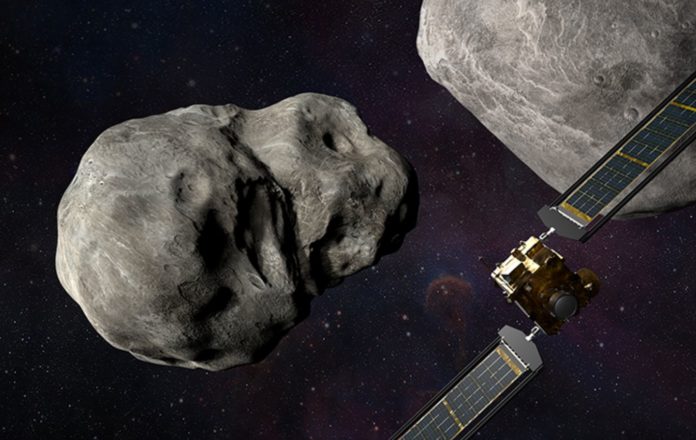Johns Hopkins Applied Physics Laboratory engineer explains the ins and outs of the DART mission to deflect a space rock
Luis Miguel Rodriguez, a software engineer at the Johns Hopkins University Applied Physics Laboratory (USA), is a member of the DART team, the first mission to deflect an asteroid through a kinetic impact.
The rock, called Dimorphos, belongs to the binary system Dydimos and poses no threat to Earth, but it is the “perfect choice” to test this method of planetary defense.
The ship will be launched on Wednesday and will arrive in 2022. The technician justifies the test: “Panic is for the unprepared.”
Why was Dimorphos, an asteroid’s moon, chosen as the impact’s target?
Dimorphos is a member of a binary system. It is the moon of another larger asteroid called Didymos.
By impacting with the little one, we can more easily measure the difference in its orbit around Didymos, something that would be much more difficult to measure by pushing an asteroid traveling at much higher speeds around the Sun. This system is considered to be an object close to Earth (known as NEO). This means that it can pass within about 50 million kilometers of Earth’s orbit, which makes it impossible to measure the impact of DART with ground-based telescopes.
What will happen to Dimorphos when the impact occurs?
DART will give it a push, which will change its trajectory around the largest asteroid, Didymos. Right now, Dimorphos turns Didymos around in 11 hours 55 minutes. After impact, that orbit will shrink by 10 minutes. This small change in its period will confirm that we can indeed deflect an asteroid through a kinetic impact.
Why don’t we blow it up instead of diverting it?
By deflecting the asteroid we can understand the level of impact and characterize the success of our test. If we were to blow it up, it would turn into many more objects with their own trajectories. In this case, the rock is not in an orbit that intercepts with the Earth, but if in the future there were an asteroid that presented that case, it is much better to understand the change of trajectory of a single object than to create thousands through an explosion.
How likely is it that we will use technology to save Earth from an asteroid?
Right now we don’t know of an asteroid of that magnitude coming toward Earth, so there’s nothing to worry about for now. But if it were to be the case, an asteroid around 140 meters in diameter could destroy a metropolitan city and its surroundings. There are believed to be about 25,000 asteroids around that diameter orbiting the Sun, but NASA estimates we’ve only found 40%. For this reason, it is so important to understand the surroundings of the Earth, find asteroids of that size and explore our alternatives to save the Earth in such a scenario.
Remember the dinosaurs …
We know where 100% of the asteroids like the one that killed the dinosaurs are (12 km), because they are big. And we don’t know of any asteroids that pose a threat. But missions like DART are important because they help us not to panic in the future. We already understand the technology we can use to defend ourselves. Through this mission, the dedication of Johns Hopkins, NASA, and all of our partners, humanity will be prepared!
Are there other alternatives to deflect an asteroid?
Yes. For example, the gravitational tractor, which would use the mass of a nearby ship to change the trajectory of the asteroid. The method we use depends on the asteroid we want to deflect and how long we have since the warning.
Image Credit: NASA
You were reading: DART mission: A 140-meter asteroid could destroy a city and there are about 25,000
